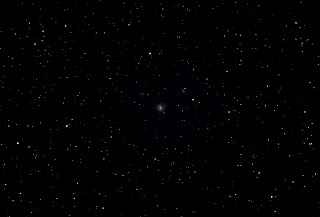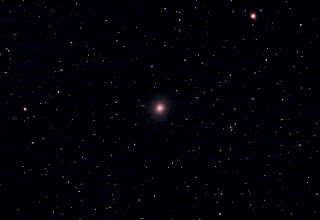Although I am happy how this image of M49 turned out, APOD this is NOT. Lots processing to fix things. In addition to the normal noise and gradients that I deal with, there were black spots (sometimes colored close up) speckled throughout the image (looked like chicken pox). I have had a couple of this pop up from time to time but not in a long time or like this. The only thing different from the other Virgo Galaxies I have imaged is it was really warm outside, 75 F or 24 C. I was able to get most of the spots out with normal smoothing in PS, Astronomy Tools, Star Tools, and LR, however, some of the spots were on M49 so I used the healing brush (i.e. the image is not pure).
Anybody in Astrobin Land have similar experiences or know what this caused this? If it noise caused by the heat is there something that can be done other than getting a CCD? I saw on Cloudynights someone made a homemade DSLR cooler for a Canon T3i. I might go with this approach.
The weather has been awful for the past month and it looks like cloudy weather for the next two weeks so this image will have to do for my Messier catalog.
M49 (NGC 4472) is an elliptical galaxy located in the constellation
Virgo at a distance of 55.9 million light years from Earth. M49 can be found 4.1 degrees to the west-southwest of the star Vindemiatrix, a yellow giant that is the third brightest star in
Virgo.
M49 was the first member of the Virgo Cluster to be discovered and is the brightest galaxy in this group. About 157,000 light years across in size, M49 is larger both than the Milky Way (100,000 light years) and the
Andromeda Galaxy (140,000 light years). The galaxy contains at least 200 billion stars. It is receding from us at an approximate velocity of 981 km/s (source:
Messier Objects).
This is the 87th Messier Object for my catalog and the second to the last Virgo Galaxy (M61 is the last).
Wide Field
Interesting Frame
M49 Crop
M49
Location: Happy Frog Observatory, Monroe, CT
Date: 6-11-17
Camera: Canon EOS Rebel T3i(a), Backyard EOS
Telescope: Orion ED80 80mm f/7.5 Apochromatic Refractor Telescope
Barlow: None
Focal Length: 600mm
f/7.5
Focal Reducer: Orion 0.8x Focal Reducer for Refractor Telescopes
Mount: Orion Sirius EQ-G GoTo Telescope Mount
Filter: Astrodon UV/IR
Autoguiding: QHY-5L-II-M attached to an Agena 50mm Guide Scope with Helical Focuser
Exposure: 54 x 90s
ISO: 1600
Temp: 24 C
Post Processing: Deep Sky Stacker, Photoshop, Lightroom, Gradient Exterminator, Astronomy Tools, StarTools.
https://kurtzeppetello.smugmug.com/

















